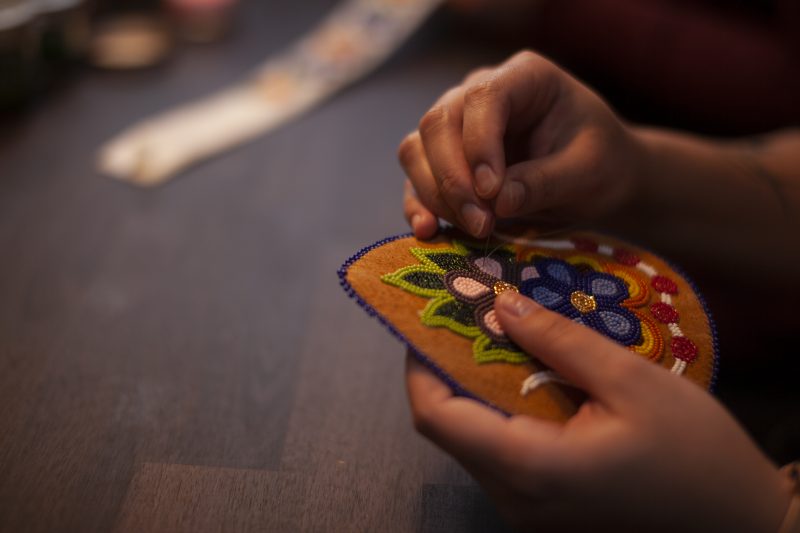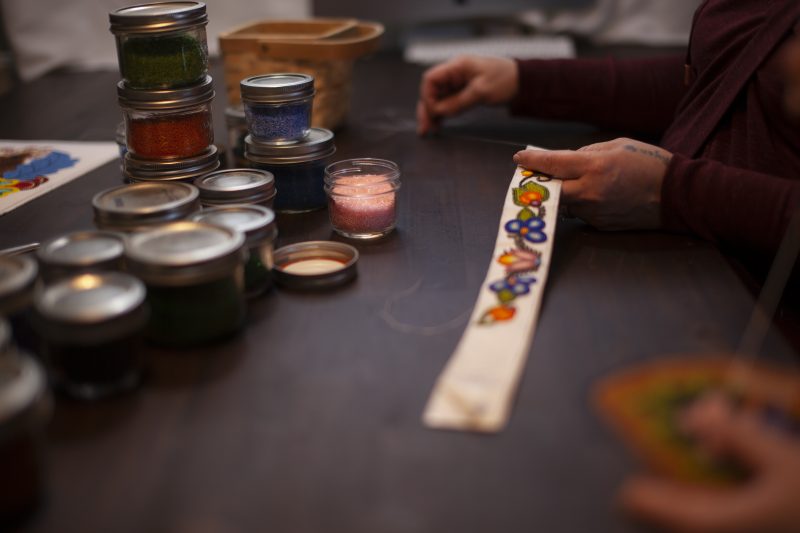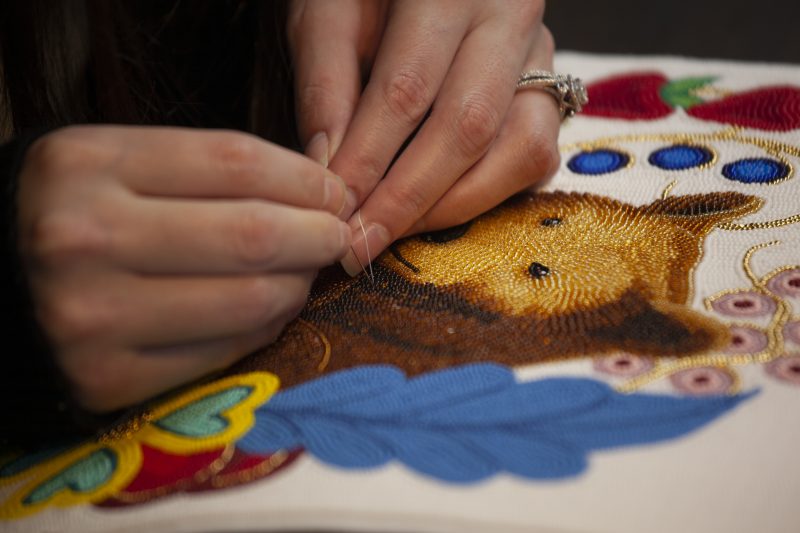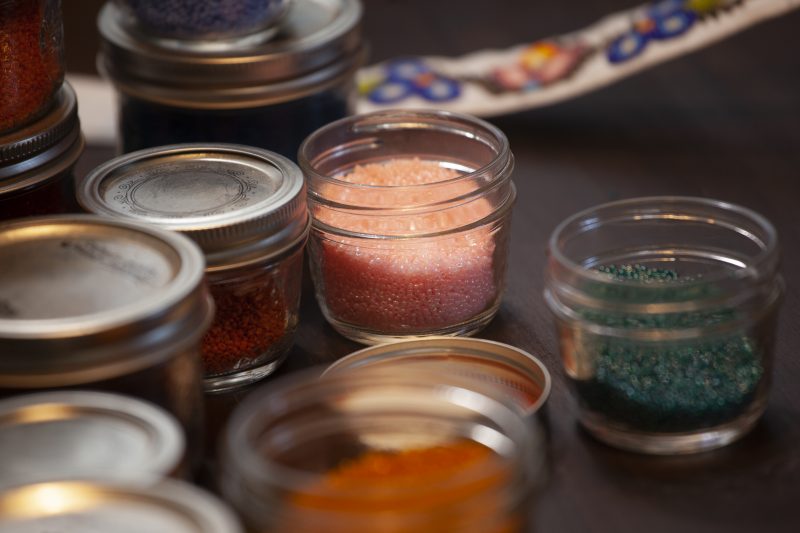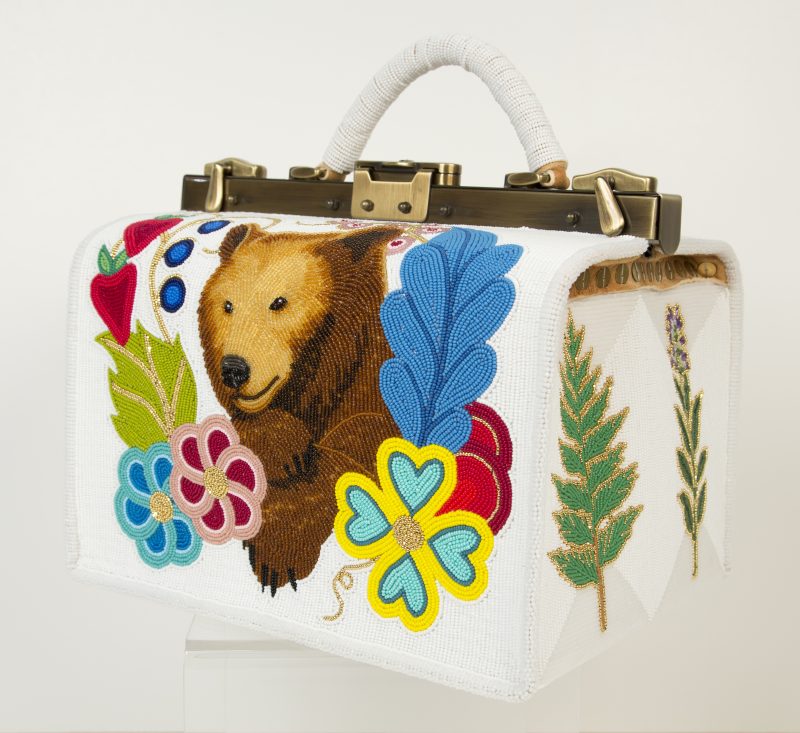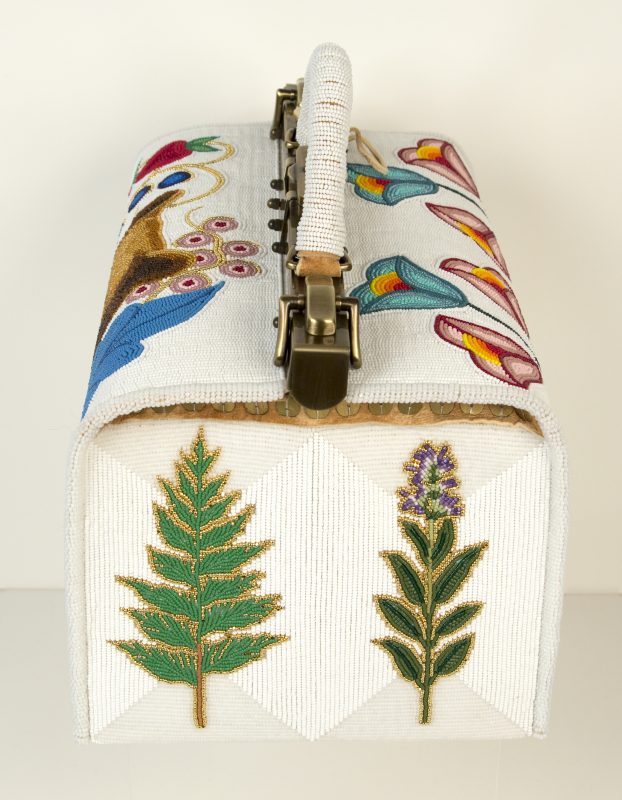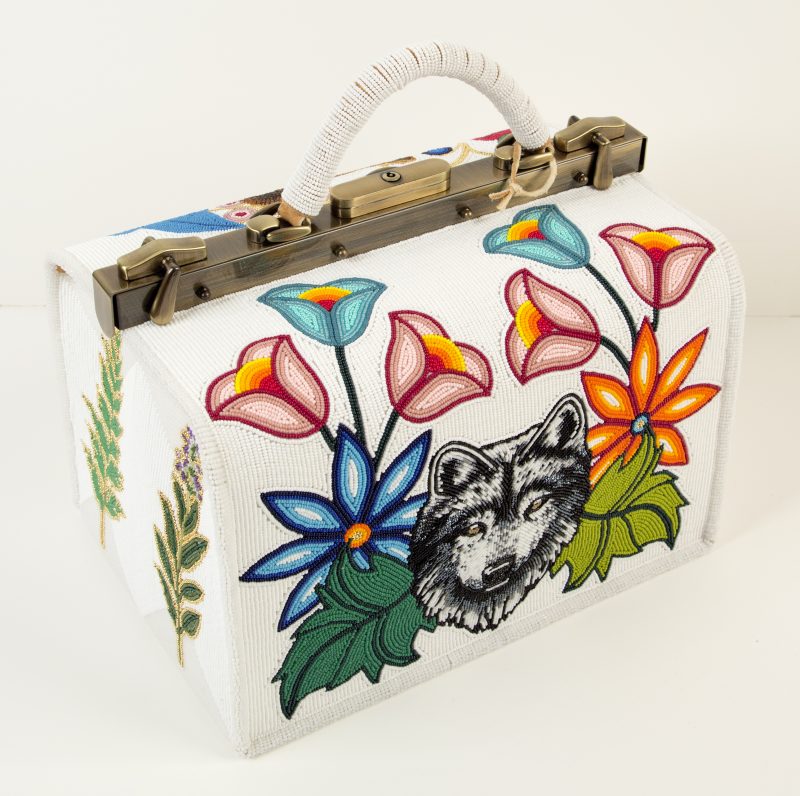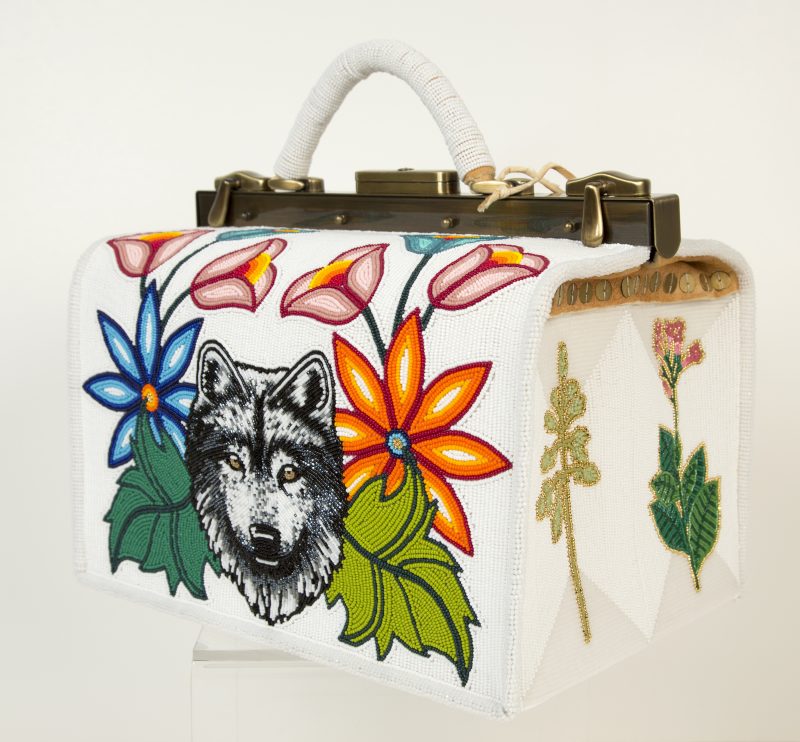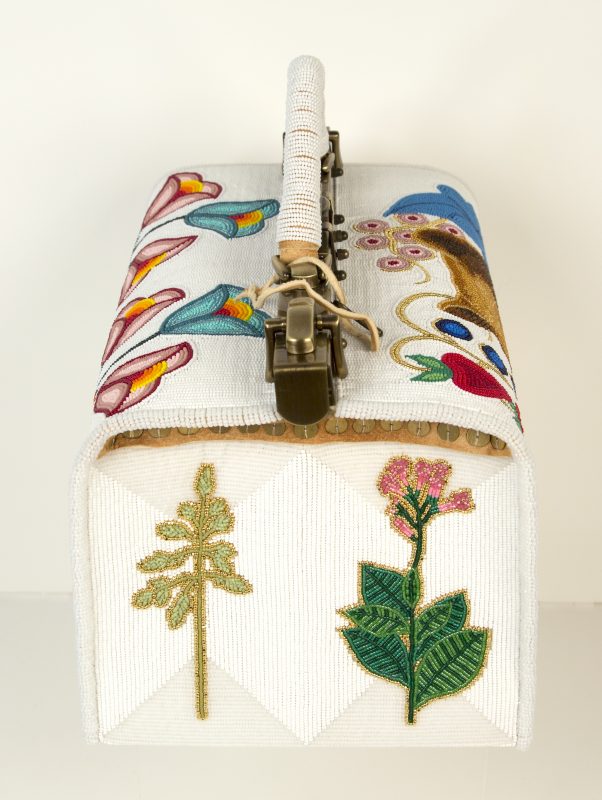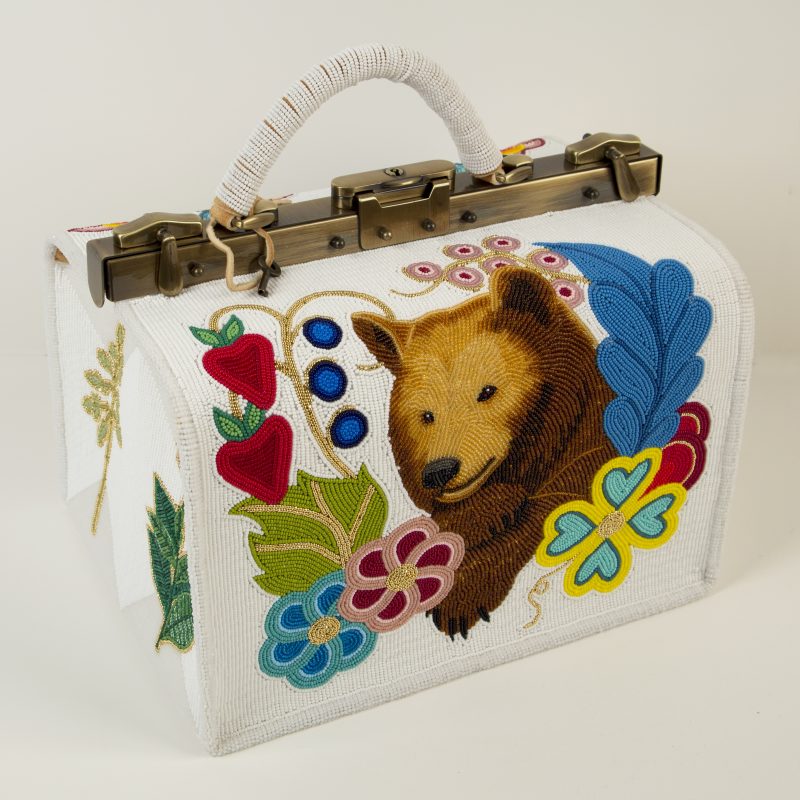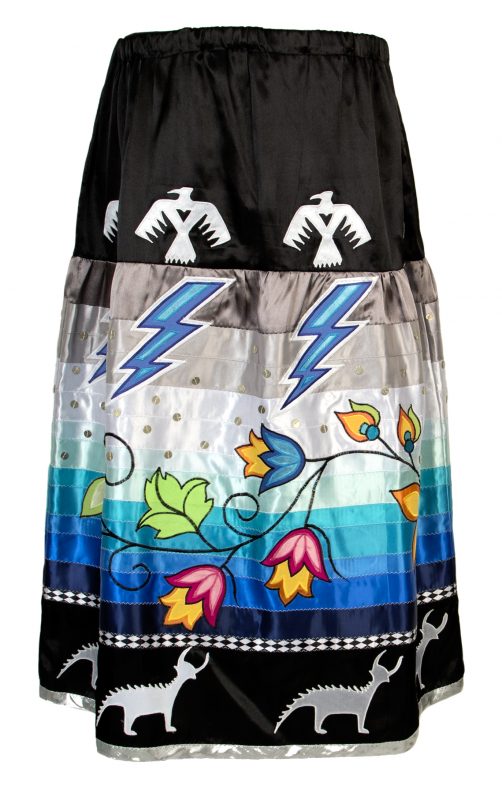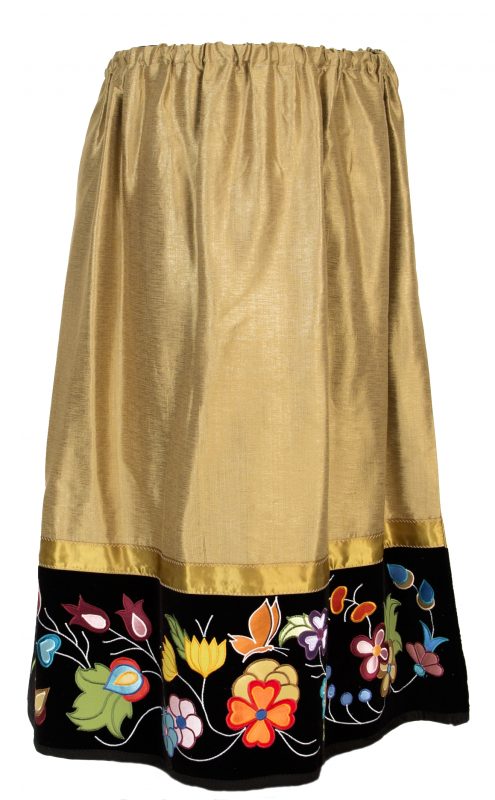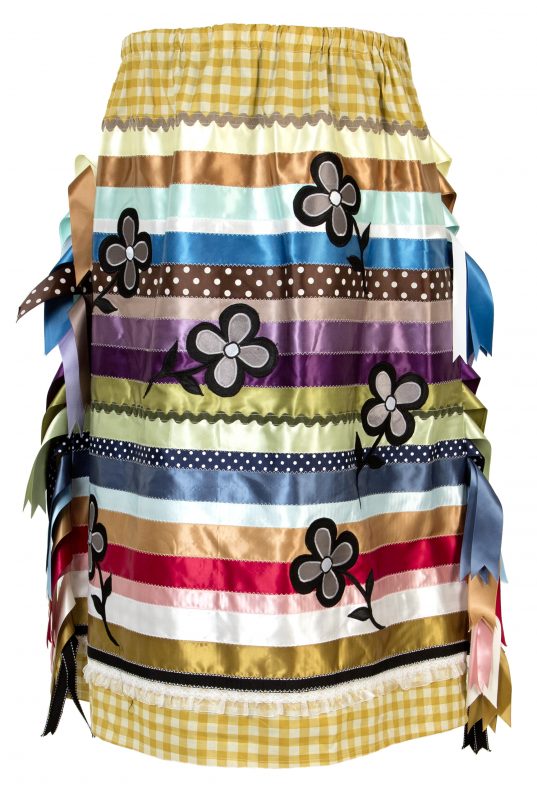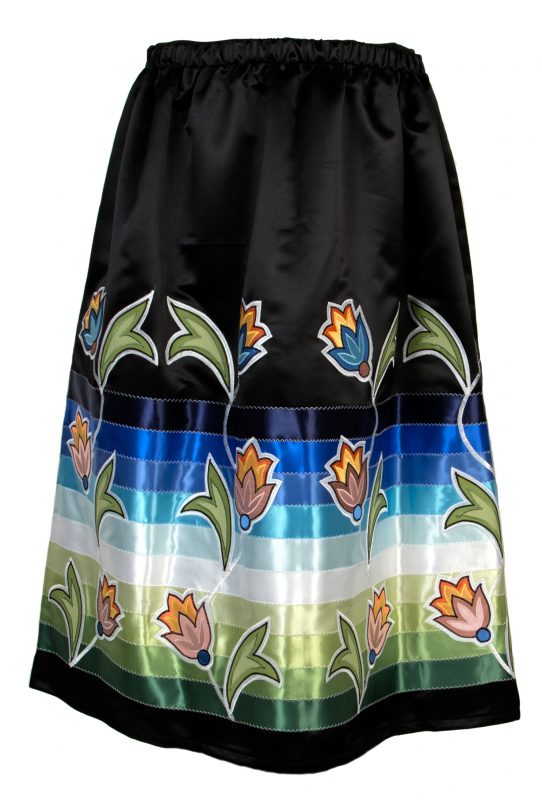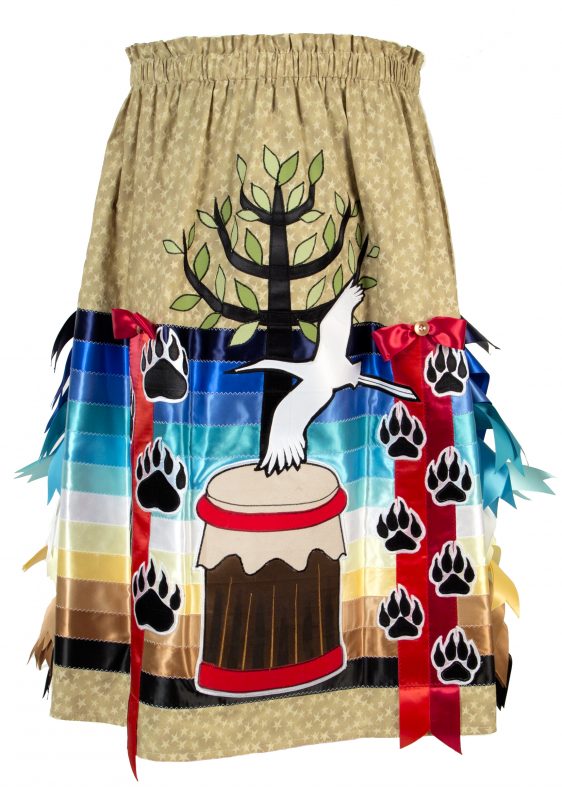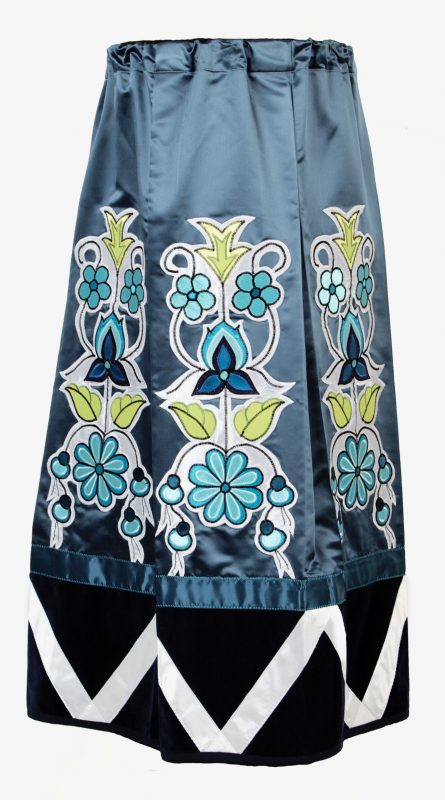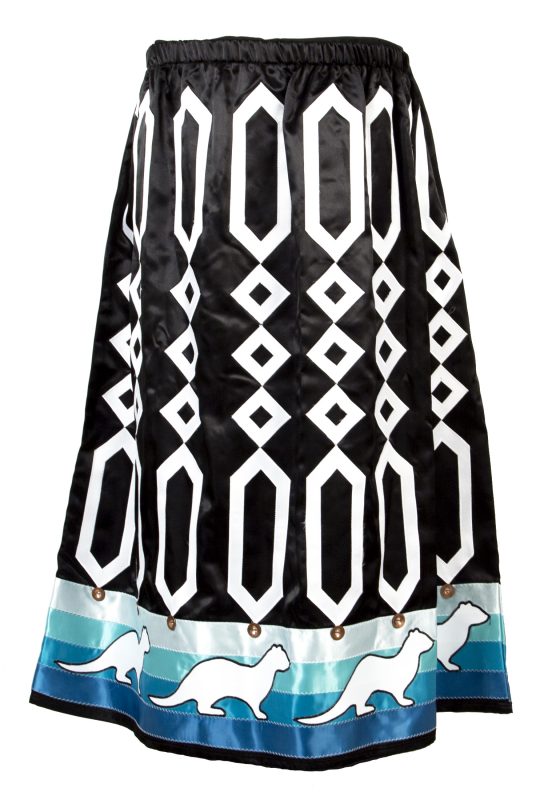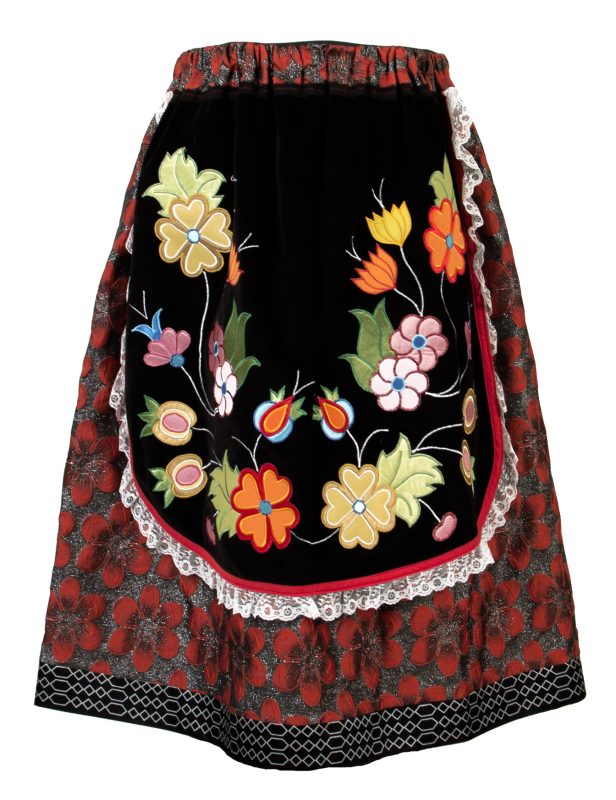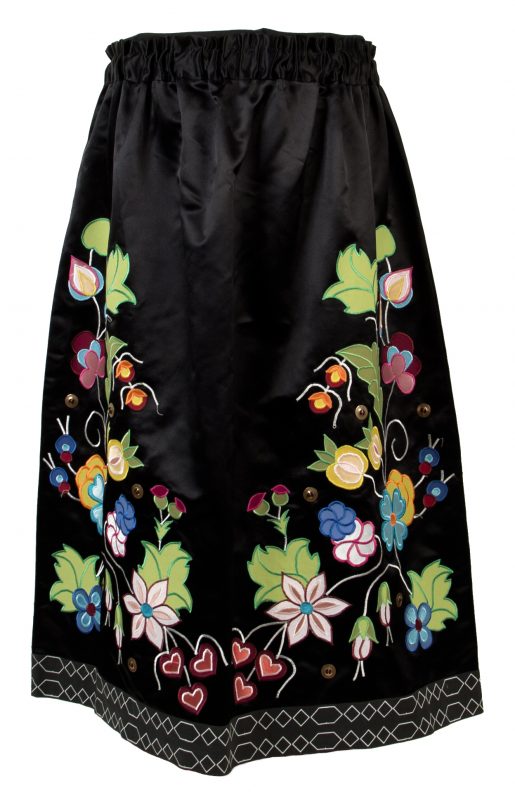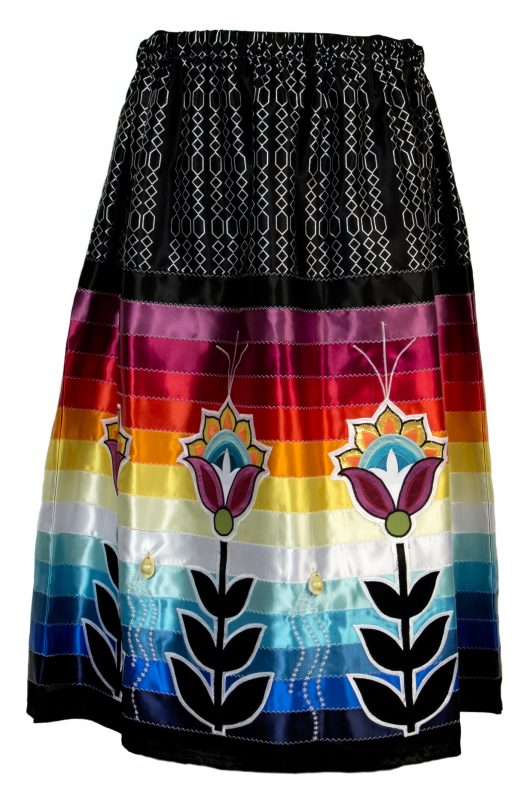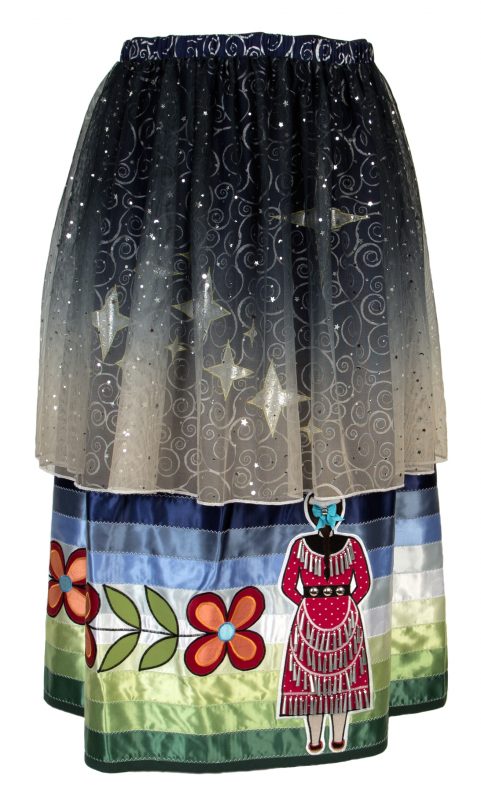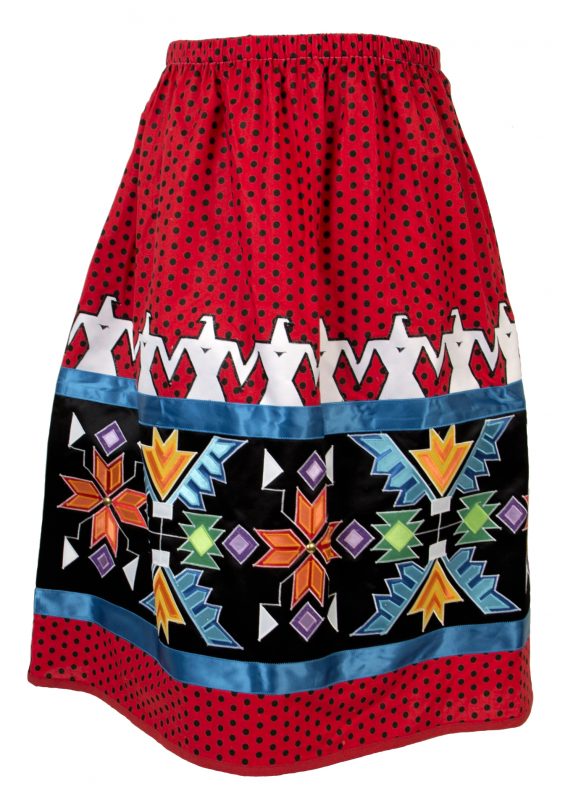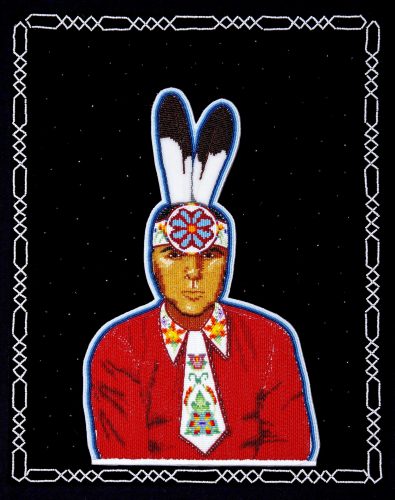
Justine Gustafson, First Portrait, 20 x 15 inches, velveteen, felt, seed beads, 2020.
This commemorative art exhibition presents artwork by the Gustafson family: Shannon, Ryan, Justine, and Jade. This exhibition honours their son and brother, Piitwewetam (Rolling Thunder), also known as the late Jesse Gustafson who travelled to the spirit world after a car accident in 2015.
Piitwewetam: Making is Medicine is an offering from the Gustafson family to each of us. As an Anishnaabe family the act of giving is an integral part of their life. Gifts are offered out of kindness, out of love. To give is to simply offer without the expectation of receiving something in return. When we give, we are enacting a sacred law that acknowledges life. With Anishnaabe tradition, a part of the grief ceremony is gifting. This beautiful exhibition is acknowledging all of the good life, including relationships, teachings, singing, and dancing that Jesse experienced when he was here on Earth. Each piece in this exhibition will be gifted to friends and family. These gifts come from kindness, from a deep love that honours Piitwewetam.

EXHIBITION VIDEO TOUR
During the COVID-19 lockdown, in the first half of 2021, many people asked us for a way to experience this exhibition online, and we listened. This Exhibition Video Tour is based on interviews with artists Shannon and Ryan Gustafson, who share personal and candid reflections on art, love, loss, healing, and ceremony.
Shannon and Ryan also generously share Anishinaabe teachings connected to works in the show. They teach us how to grieve in a good way.
Co-curators Leanna and Jean Marshall offer insight into their curatorial process, beadwork, and thoughts on the gallery as a ceremonial space.
We hope you enjoy this tour as a deeply personal journey into the exhibition.
Thank you to the Gustafsons and Jean and Leanna Marshall for making this possible.
Filmed by Sarah Furlotte of 48th Parallel Productions.
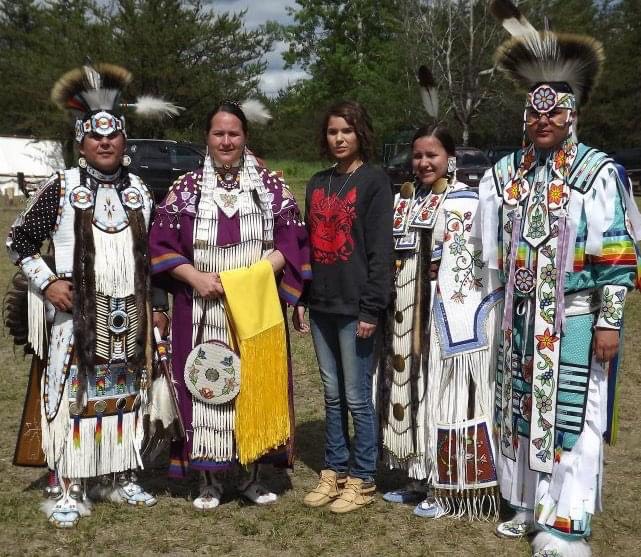
As a grieving parent, your biggest fear is that your child will get forgotten. By doing this, it will speak to him, it will speak to his life, it will somehow preserve that. Our journey is something that, despite how hard it is and how challenging it is, there is beauty in all of it. All the pain, hurt, tears — it speaks to love: the love that we have for him.
— Shannon Gustafson
Making is Medicine
The act of making together is a part of the Gustafson’s grieving process. Their creations are a part of their story that allows them to express themselves. After Jesse’s passing, Ryan and Shannon and their daughters, Justine and Jade, came together weekly to make. They work collaboratively on regalia pieces. They spent time working on grass dance outfits and star blankets that were made to be given away for Jesse’s memorial dances at powwows. This family is quiet and they like to laugh too. Beading is a part of Anishnaabeg history and this family carries that tradition of making and creating, honouring, and giving. The Gustafson’s remind us that beading has a way of soothing a wounded spirit. Their way of coming together, to make, is the essence of this show: making is medicine.
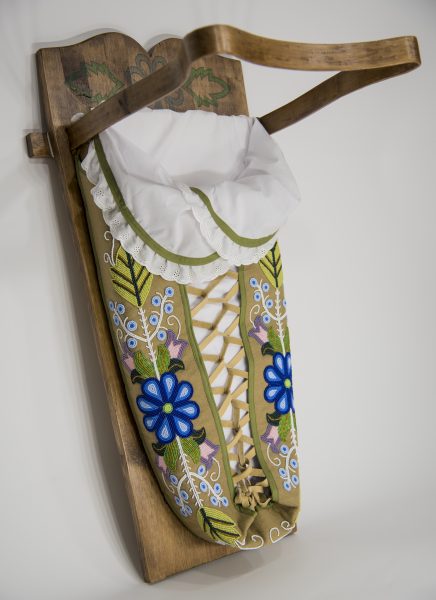
To Live in Balance, Justine Gustafson & Ryan Gustafson, 2016, 83.8 x 40.6 cm, pine, black ash, sinew, melton wool, leather, seed beads. Photo Credit: Christian Chapman
To Live in Balance
A tikinagaan is a baby-carrier. It is one example of a sophisticated tool used by the Anishnaabe. The tikinagaan is used to keep the baby safe and soothed as it mimics the womb in comfort and warmth. The tikinagaan allows the baby to go with their family everywhere. It has been designed so the baby can bear witness to the goings on of life. The tikinagaan was designed to be carried on the back. The Anishnaabe are nomadic people whereby travelling on water is a way of life. In the brilliant design of the tikinagaan, it will flip up and stay afloat so the child is on the back, facing the sky. It also protects the child from sun, insects and brush from their face.
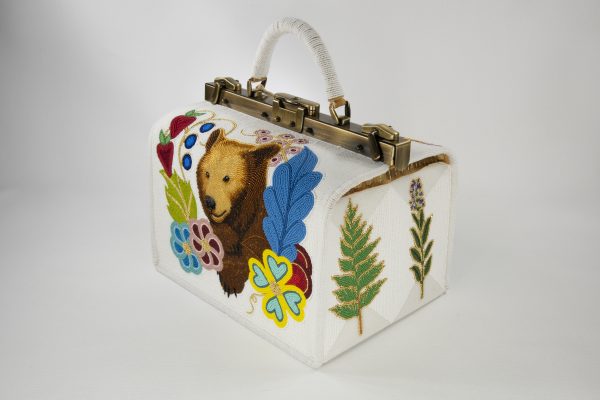
Let’s Heal Together, Justine Gustafson, 2020, 22.9 x 25.4 x 30.5 cm, felt, satin, seed beads, metal clasp, smoked deer hide, brass sequins. Photo Credit: Christian Chapman
A fully beaded physician’s bag to represent the healing that has taken place within our family. We are bound by love and loss. A bag to symbolically hold the tools that supports our healing journey. The beaded physician’s bag depicts floral motifs and imagery of the patriarchal and matriarchal clan animals.
—Shannon Gustafson
Let’s Heal Together
Justine Gustafson made this bag for her mom and dad. It is symbolic of a doctor’s bag. She made if for them to carry their traditional medicines. Justine beaded four medicines on this bag to remind her parents to use the plant medicine to help them when they need strength. This bag exudes Justine’s love she carries for her family. The energy that was put into this bag is easy to feel as her thoughtfulness shines through so clearly and lovingly. Justine is a master beadworker, she carries stories and knowledge and all you need to do is look at her work to know and understand that.
Jingle Dresses
The jingle dress originated from within the ceremonies of the Ojibwe Nation. The dress and dance is one of our most sacred gifts and is used for healing. There is nothing more beautiful than the sound of thousands of jingles dancing in support of your healing journey. —Shannon Gustafson
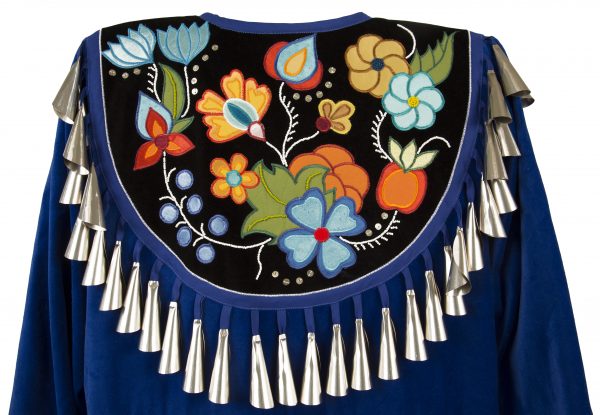
Blue Jingle Dress, Shannon Gustafson, 2020, 132 x 71 cm velveteen, cotton, satin, silver sequins, seed beads, jingles, 2020
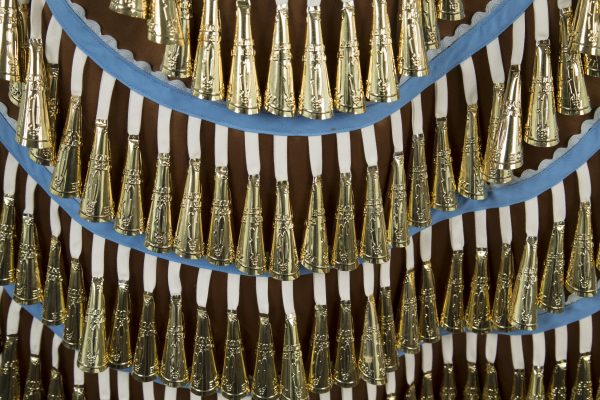
Brown Jingle Dress, Justine Gustafson, 2020, 127 x 61 cm, velveteen, satin, Swarovski crystals, jingles,
Wiingashk
Shannon created 13 skirts and 13 letters to her son. The collection of skirts is deeply bound to the moon cycle, the cycle of motherhood, the land, the water, and a mother’s body. These skirts celebrate the cycles and acknowledge the challenges that come with change.
Hey Jess,
Every now and again out of nowhere the essence of burning sweet grass would fill the air I breathed. Sweetgrass reminds me of your adventurous spirit and how you loved to travel.
It was the west that taught you about sweetgrass, I have memories of you cleansing yourself before heading out to dance. I have memories of you sitting at your drum, smudging yourself…and your bro’s. You smudged with it when you were feeling down about things, when you were anxious or worried. It is such a sacred medicine. I always made sure to give it out as gift as part of your memorial specials. It has become the medicine that reminds me of you.Love mom.
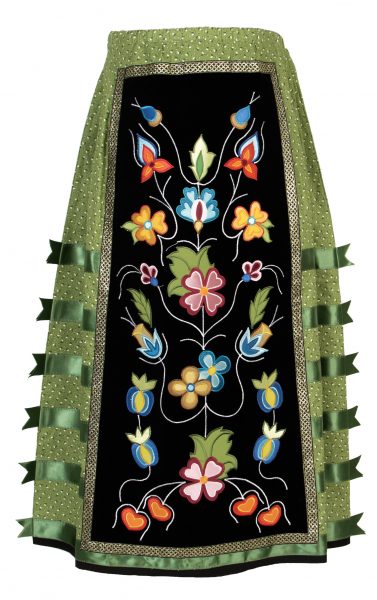
Wiingashk, Shannon Gustafson & Ryan Gustafson, 88.9 x 94 cm, velveteen, satin, cotton, Photo Credit: Christian Chapman
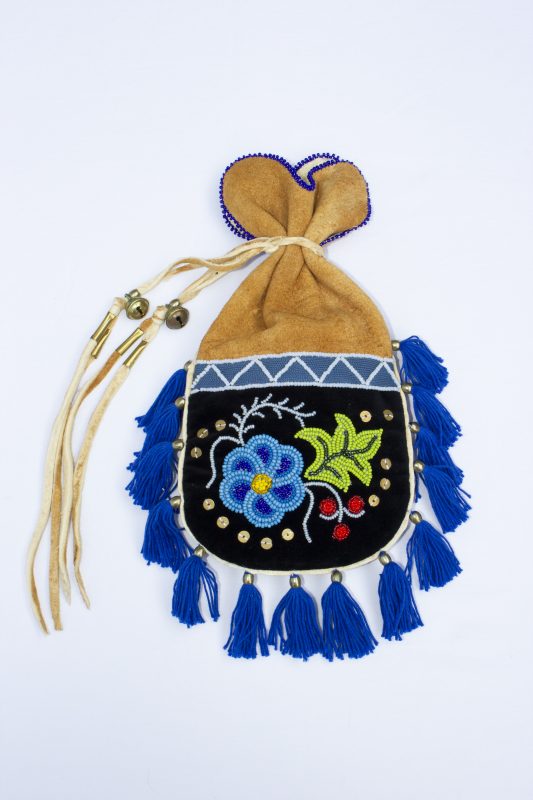
Blue Tobacco Bag
The tobacco bags reflect the gratitude and respect that we carry for this medicine. Tobacco always comes first before anything. It delivers our thoughts and prayers to where they need to go and is used as a form of currency in exchange for guidance and teachings from our knowledge keepers and Elders. — Shannon Gustafson
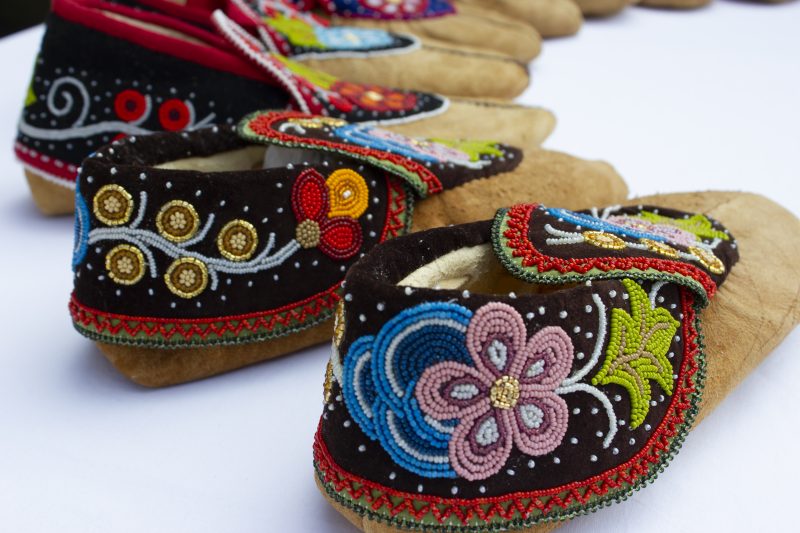
My Grandmother’s Shoes
In order to use your feet, you must move forward. The Gustafson’s are leading the resurgence of traditional Ojibway split-toe moccasins. These moccasins bring together the past, the present, and the future generations. Dancing was an integral part of Piitwewetam’s life and his footsteps changed the land and all the people that intersect with them.
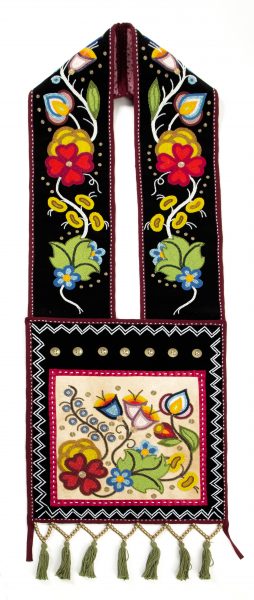
Gashkibidaagan
The Bandolier bags are specific to Anishnaabe. The designs on the bag show the story of you who are. They identify who are, who your family is, where you are from, and what responsibilities you carry. Beaders carry a beading lineage that allows their work and story to be visually recognizable to others. The Gustafsons clearly carry on this tradition. Through their beadwork, they have created a marking that identifies who they are.
The Gustafsons do their research by talking with Elders and knowledge keepers, reading books, and looking at old pieces. Again, this shows their ability to bring a traditional practice and carry it forward through the generations in the most respectful of ways.
These beautifully decorated bags are the cultural icons of our past. They were used to carry ceremonial items, medicines and considered a symbol of prestige. Bandolier bags were a valuable trade item and a gift of the highest honor. Each bag, constructed collaboratively by the family, features the flowers symbolic of their family.
IMAGES: Gashkibidaagan, Shannon Gustafson, Ryan Gustafson,, 2019, 35.6 x 114.3 cm, velveteen, cotton, seed beads, satin ribbon, brass sequins, brass buttons, brass beads, yarn
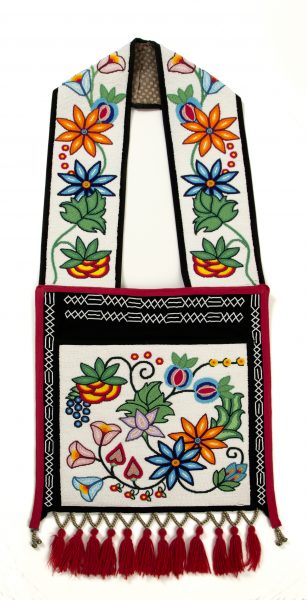
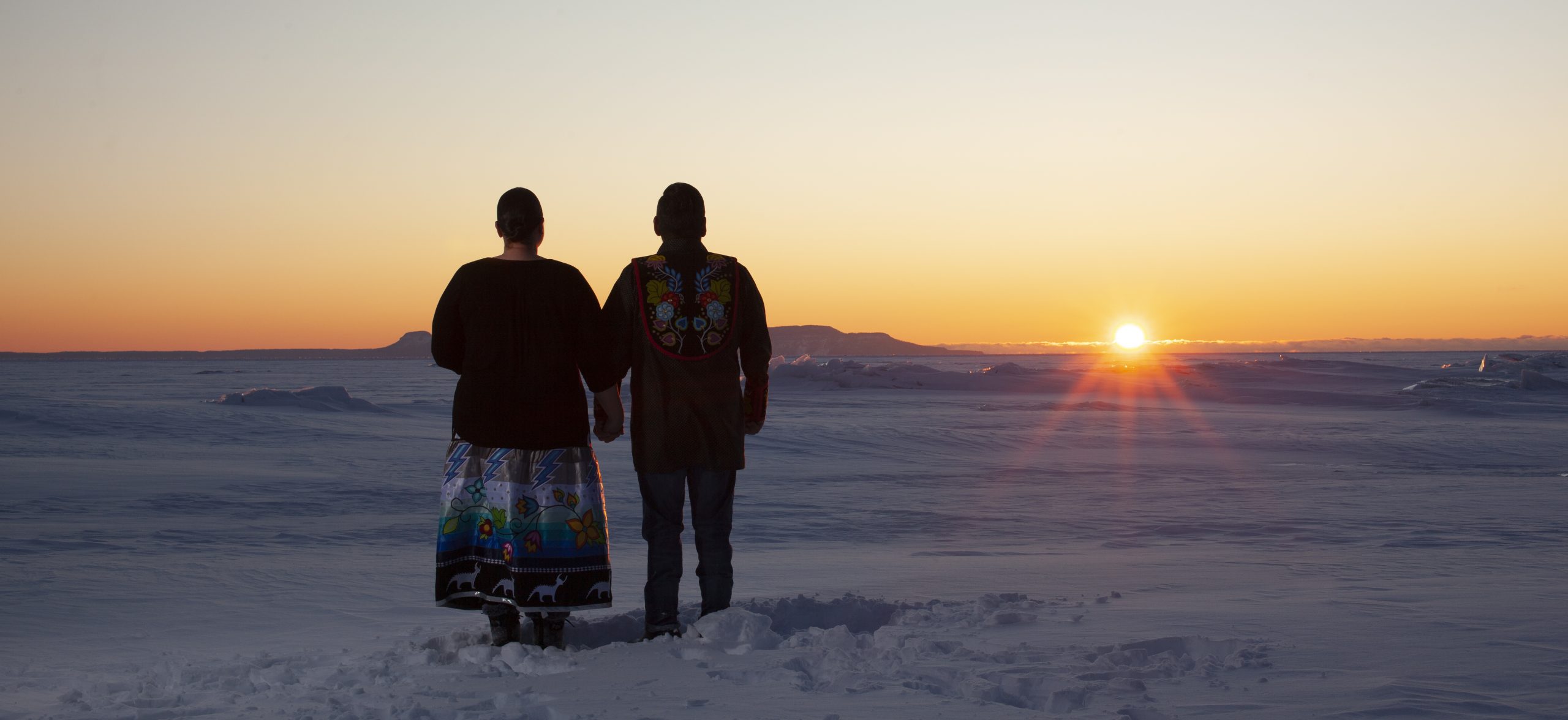
Ryan & Shannon, 2020 (sunset/sunrise) Photo Credit: Shayne Ehman
curated by
Leanna and Jean Marshall
funding provided by



